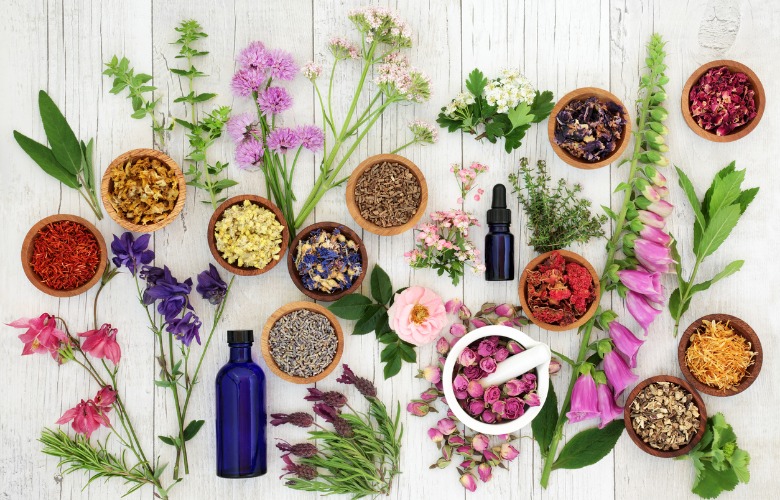Not Relaxing Can Lead to Stress
Tips on how to Relax
Try these tip on how to include relaxation as part of daily living:
- Schedule time to meditate each day. Even as little as 10 minutes can be beneficial.
- Exercise regularly, try practicing mindfulness by focusing attention on your body as you move.
- Deep breathing can be done almost anywhere and is a quick method of reducing stress.
- Getting a massage or taking a hot bath can help relieve tension in muscles.
- Laughing, listening to music, or enjoying a cup of tea are also great ways to relax!

Mindful Meditation
What’s all the buzz about mindfulness? Lately, it seems the concept of mindfulness is becoming more and more popular. We live in an ever increasingly connected and technologically driven world where everyone must work even harder to achieve work-life balance. Work emails can arrive at any moment during the time we schedule for rest and distractions of every kind are always around us from social media to the latest viral video. With all of these demands for our attention, stress can build up and, along with it, increased blood pressure and lowered immune function. The idea that we can set aside some time – as little as ten to twenty minutes per day – to simply being “aware” can sound like a very exciting solution indeed!
Mindful meditation can be helpful in achieving a state of mind that is not transcendent, like the meditation we are familiar with, but rather a state of complete awareness. It is achieved by paying attention to whatever is in that moment; focusing on it without thinking of the past (even the moment before) or what will happen in the future.
By experiencing the awareness of a moment, in turn, helps us to embrace that moment no matter what else is happening at the time. By doing so, the habits of rumination such as wishing things could be different, and distractions can be thwarted by a strengthened ability to live literally “in the moment”.
How to Do Mindful Meditation
While it is nice to create a small, quiet spot where you can light candles or incense and create an oasis for yourself, this is not necessary. All you need to do is:
- Find a chair, bench or cushion and sit in a way that you find comfortable.
- Cross your legs comfortably in front of you.
- Straighten your back, but don’t stiffen it.
- Let your hands fall to your side and let your body remain slack but in position.
- Lower your chin and let your eyes gaze on whatever is in front of you, gently falling downward.
- Now be there: feel your breath and relax.
That’s it. You’re done!
If you feel you are stressed again during the day, simply do it again.
Mindful meditation is a simple. It may seem difficult at first to tune out the clutter in your mind or ignore the pull of technology but practice will make it easier over time. It may seem like it isn’t much but studies show that even as little as a few minutes of meditation a day can lower blood pressure, boost the immune system, improve ability to concentrate, and improve the physical and emotional responses to stress.

Wellness with Crystals
You may have noticed people posting about crystals for their health lately, especially celebrities. This may seem like a new trend, however, crystals have been used for thousands of years for their healing properties and the energies they release for balance and relaxation. Crystals are used as an alternative medicine technique and believed they act as channels for healing. Stones and crystals allow negative energy to flow out of the body as positive, healing energy flows in.
Interested in giving crystals a try?
Here are a few popular choices and their healing properties:
Quartz Crystal
is a powerful crystal that amplifies energy and dissipates negativity. This crystal is made of silica, the most abundant element on earth. They are often used in meditation, chakra balancing, healing and changing bad vibrations.
Citrine
is a crystal that has a lot of positive energy and is often used to encourage one to dream big and remain positive. It is also called the “success stone” as it is believed to manifest success, happiness and abundance in all areas.
Rose Quartz
is the stone of unconditional love and releases the energy of the heart. It is believed to release the negative emotions and pain of the heart and support forgiveness. It reawakens and allows self-love to flow within, while emitting vibrations of love, beauty and compassion.
Celestite
is a blue crystal to encourage deep peace and happiness. The perfect stone to release stress and encourage sleep and tranquility. Celestite is often used for meditation and helps block out distracting “noise”.
Turquoise
is considered the master healer and believed to bridge energy between heaven and earth. It has long been considered a lucky charm to many since ancient times and often worn for protective properties. Turquoise is also the communication stone, helping one to speak truth from love of the highest source.
There are so many more crystals and stones to choose from, all with their own ancient healing properties. After choosing the crystals right for you, you set an intention by holding the stone, sitting quietly and breathing. By doing this you are connecting with the crystal and creating an energy for your own needs to be sent out into the world. Some may take this time to pray, meditate or just simply be one with their thoughts, aspirations, and goals. This alone can help to center, ground and balance you, making it easier to face the day ahead.

Wellness with Ecotherapy
When you’ve had a hard day (or year), have you daydreamed about laying on a beach, walking along a river or hiking trail or sitting outdoors with a cup of tea, with just your own thoughts to bother you? It may be an intuitive solution given doing these things on a regular basis, you would feel better physically, mentally, and emotionally. Our desire to be closer to nature is becoming recognized as part of a growing healing treatment called ecotherapy or “green therapy”.
According to a study done by the University of Essex in 2013, the time a person spent in nature or the outdoors was “proven to improve mental health, boost self-esteem, help people with mental health problems return to work, improve physical health, and reduce social isolation”. 1
Ecotherapy can be done in both rural and urban settings, whether it is a park, garden, farm or woodland. People can experience nature by taking a walk or cycling through woodlands. Sitting in a park or garden enjoying the sunshine. Canoeing or rowing down a river or in a lake. “Green” therapy also includes working in nature, with or without a group, whether it be in a community garden, farm, or a conservation project. There are many other kinds of ecotherapy; however, many incorporate physical activity, sunlight, spending time with animals, going on an adventure (rafting, rock climbing, caving), and/or arts and crafts. Ecotherapy can be done guided with a therapist or self-guided.
The most important aspect of ecotherapy is that it is a structured and routine activity in nature. It has been found that reconnecting with nature and green spaces can improve energy, boost well-being, and lessen feelings of anxiety and depression. After the study in 2013, the organization, Mind, found that “69 % of people had an increased sense of well-being after participating.”1
Being closer to nature is also an excellent way to get more physical activity, making it good for your heart and a boost to your immune system. It also fosters social connections when participating in group settings. Hiking, or even resting in the forest or park, has also been found to lower cortisol and blood pressure levels, making it an excellent stress-buster. Even sleep improves in those who spend regular time in nature.
Ecotherapy is a balance of a number of factors. Those people who spend time outdoors are exposed to:
- More vitamin D, aka “the sunshine vitamin”
- Fresh air that is a good source of negative ions
- Less screen time which helps us not only relax but rests our eyes.
It also helps balance circadian rhythm, meaning a better night sleep, which in turn reduces the risk of obesity. Some even believe that coming in direct skin contact with nature helps to “ground” people to earth.
Whatever the reason, it seems that becoming “one with nature” isn’t just a daydream, but a valid human need. Take that walk during your lunch hour at the local park. Build a garden in your yard or join a community garden or CSA farm. Go rafting or canoeing down the river. Take a hike with that friend who’s always bugging you to go.

Dietary Supplements for Stress
Constant stress response in the body can lead to burnout and burden the nervous system. During very stressful times, supplements can help the body cope with stress.
B vitamins including: B1 thiamine, folic acid, B6, B12, biotin, and pantothenic acid, as a complex formula, can support normal brain and nervous system functions.
Vitamin C supports production of anti-stress hormones.

Flowers and Herbs for Stress
Flowers and herbs are a wonderful and natural way to calm down, de-stress, and relax when responsibilities and life becomes tough. Ashwagandha, passionflower, and lavender are known to be particularly calming.
Ashwagandha
Ashwagandha, is an Indian herb that has been used in traditional Ayurvedic medicine. It has stress-relieving properties, as well as antioxidant benefits. Studies have shown that poor nutrition, environmental toxins, and stress due to our modern lifestyles may have a negative impact on nervous system functions. Along with stress, depression and anxiety have been shown to be reduced by use of ashwagandha.
Other benefits of this ancient herb include:
- anti-aging properties
- increases energy
- supports normal cognitive function
- supports normal immune function
Passionflower
Passionflower, also known as passiflora incarnate, is another traditional herb used for its calming properties. The passionflower increase the levels of GABA function. GABA neurotransmitter functions contribute to motor control, vision, and regulates anxiety.
In addition, passionflower has been found to:
- Overcome insomnia when combined with herbs like valerian or lemon balm;
- Help calm the symptoms of hemorrhoids, burns, and inflammation when used in a bath.
Lavender
This wonderful scented herb name comes from the Latin root lavare or “to wash”. Perhaps it was called lavender because it is often used in baths to purify the spirit. Studies show that lavender has a soothing and sedative, calming effect as an aromatherapy product.
Lavender also has been shown to:
- contain antibacterial and antiviral properties
- improve sleep quality
- reduce anxiety
- reduce agitation
- relieve stress.
Chronic stress symptoms can affect the body in so many ways, including depression, anxiety, heart issues, high blood pressure, insomnia, increased cortisol levels, headaches, memory problems, and effect emotions from self-worth to one’s mood. To make sure that stress doesn’t reap havoc in everyday life, it is important to take steps to avoid stress or reduce it. Natural approaches like herbs are a great way to manage stress and spend your time calm and doing the things you need without all of the symptoms stress can cause.
References
1 University of Essex – Ecominds: Effects on Mental Wellbeing – May 2013

Jemile earned a degree in Food Studies and Writing and has worked for almost 23 years in the medical and health industries. She has been a digital marketing consultant for Acupuncture Atlanta since 2011 as the social media manager and content manager. Writing has been a childhood dream for Jemile and writing daily for clients in the health, wellness, food, and art industries have been phenomenal. Jemile is originally from Brooklyn, NY, and lives in the Hudson Valley, NY. She lives with her husband, two daughters, her dog, and two fish. You can contact Jemile via Linkedin, her mom blog, or her website, lunaroseconsulting.com



